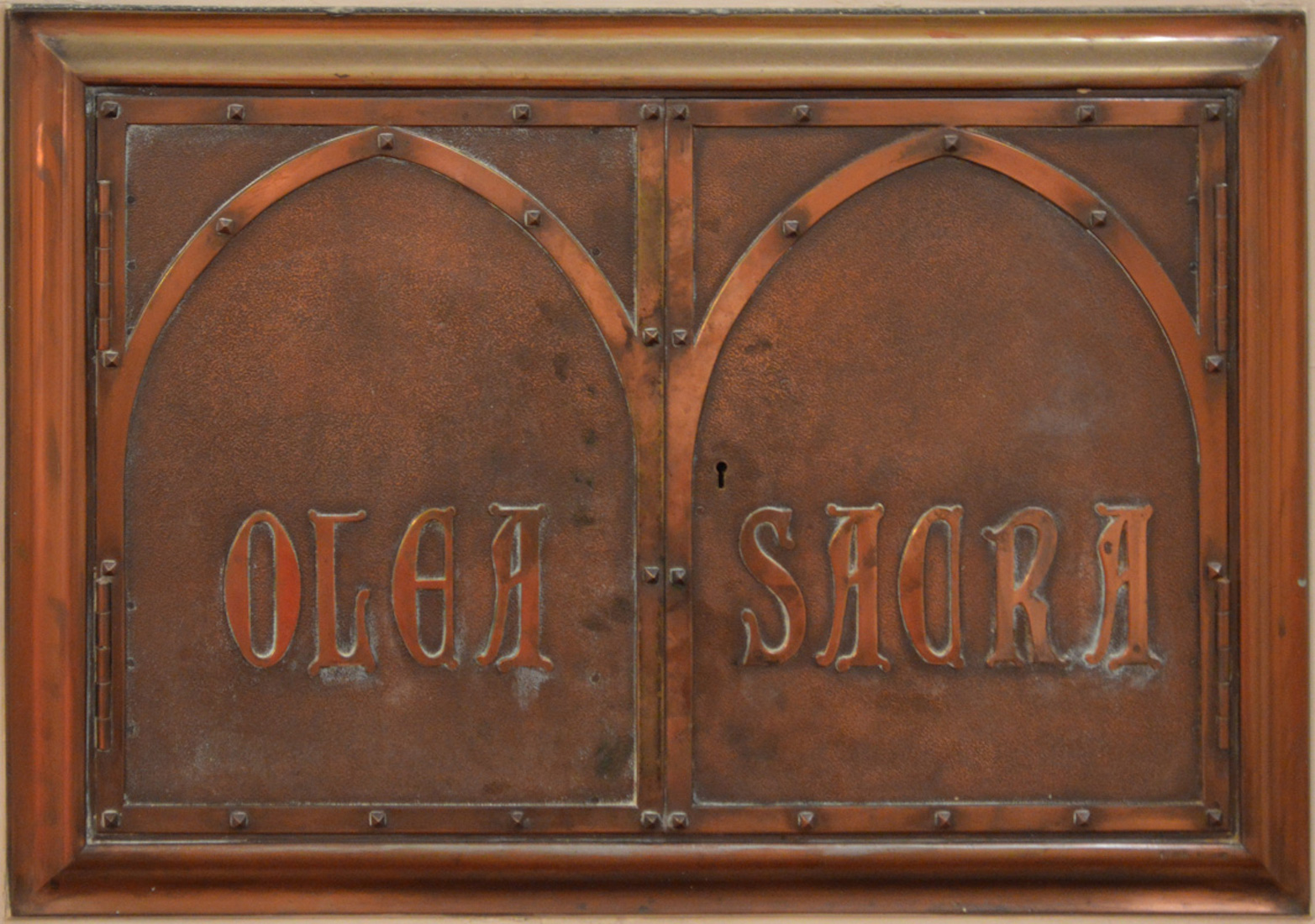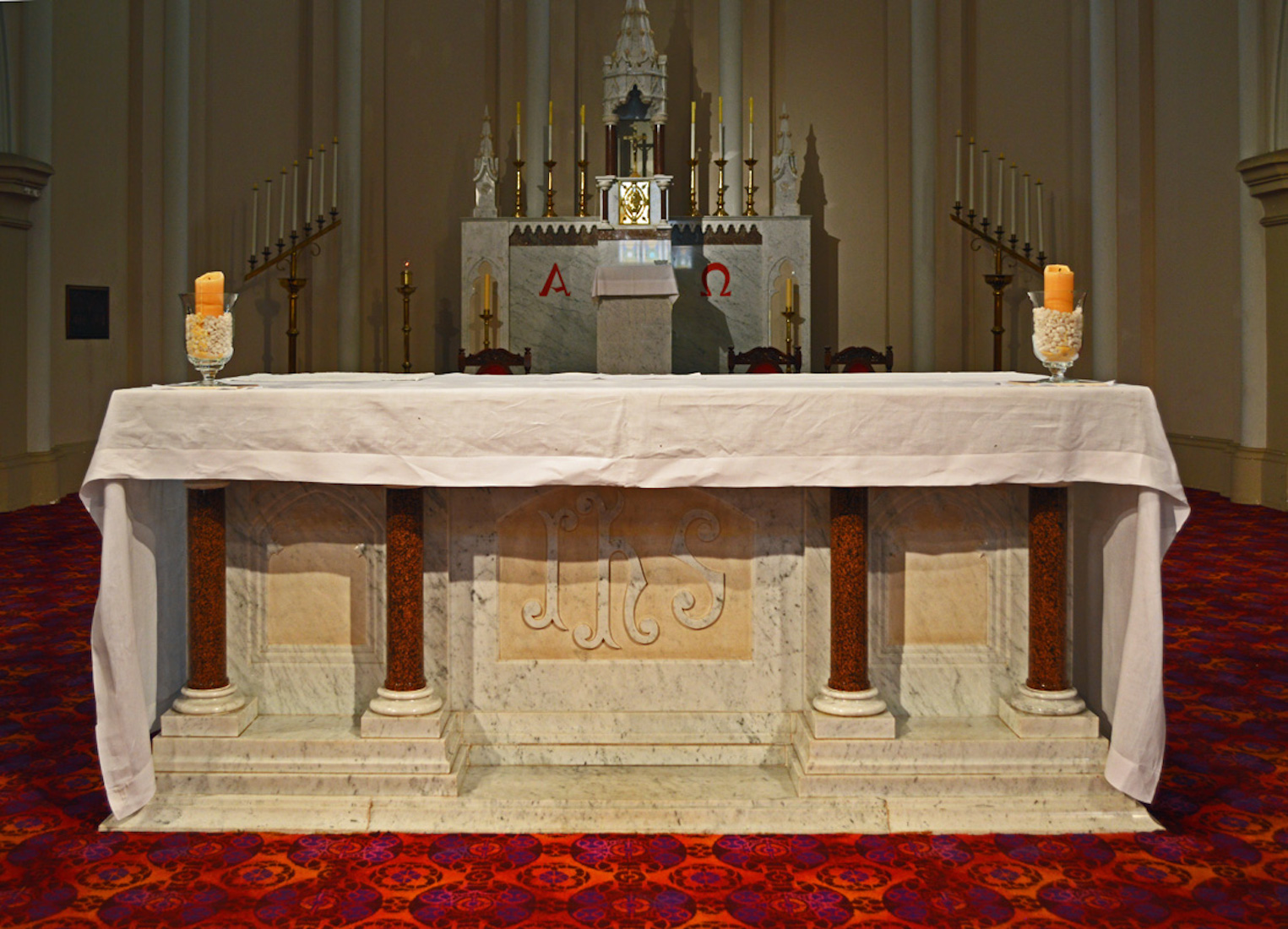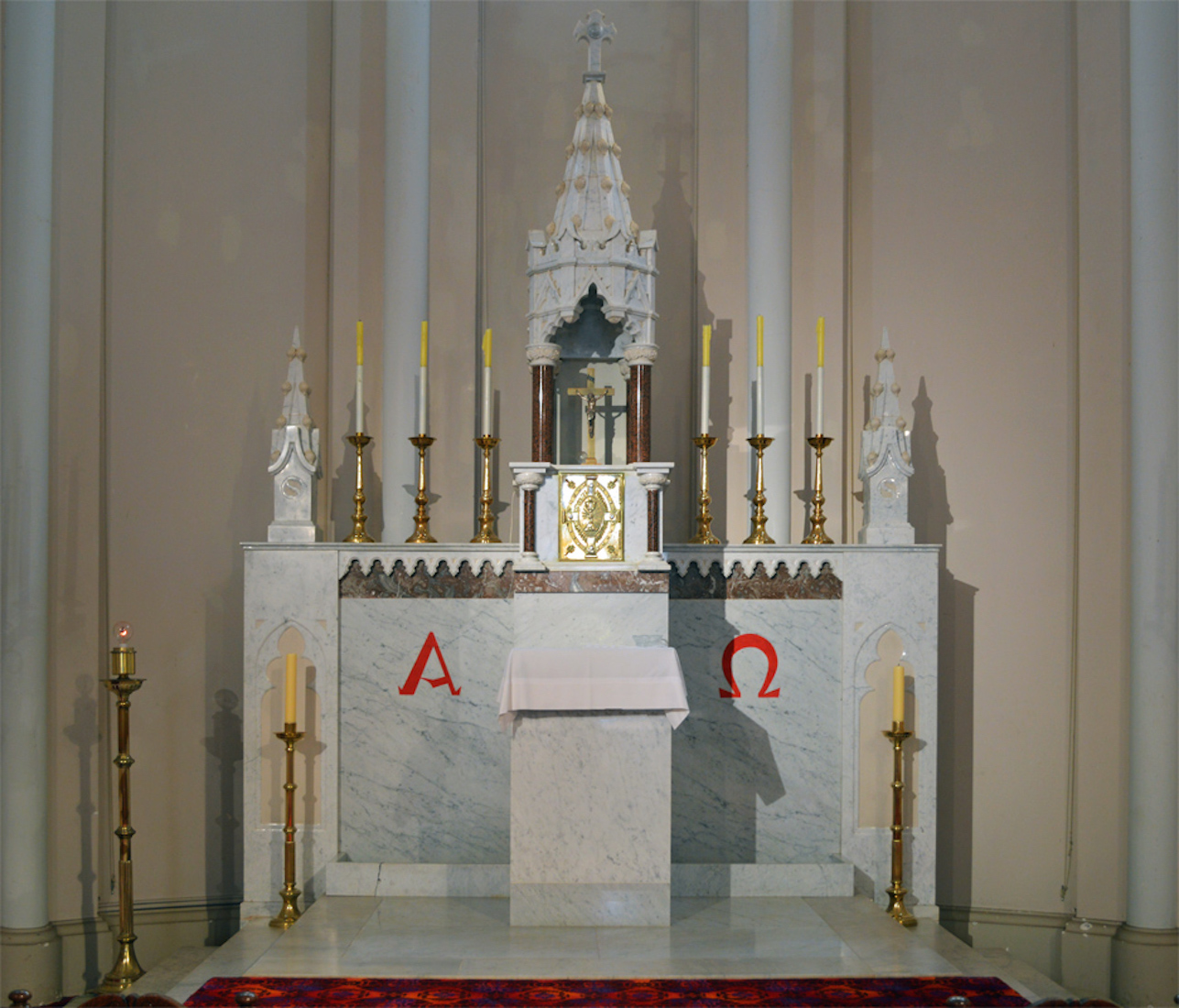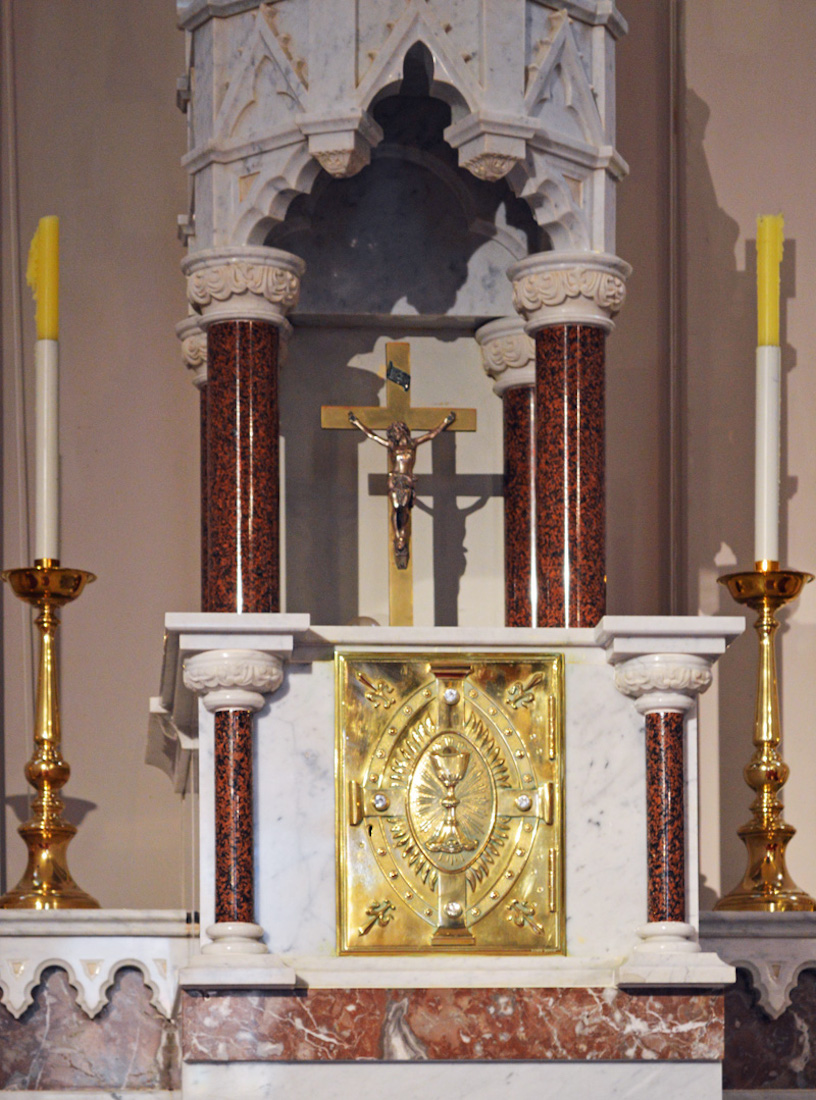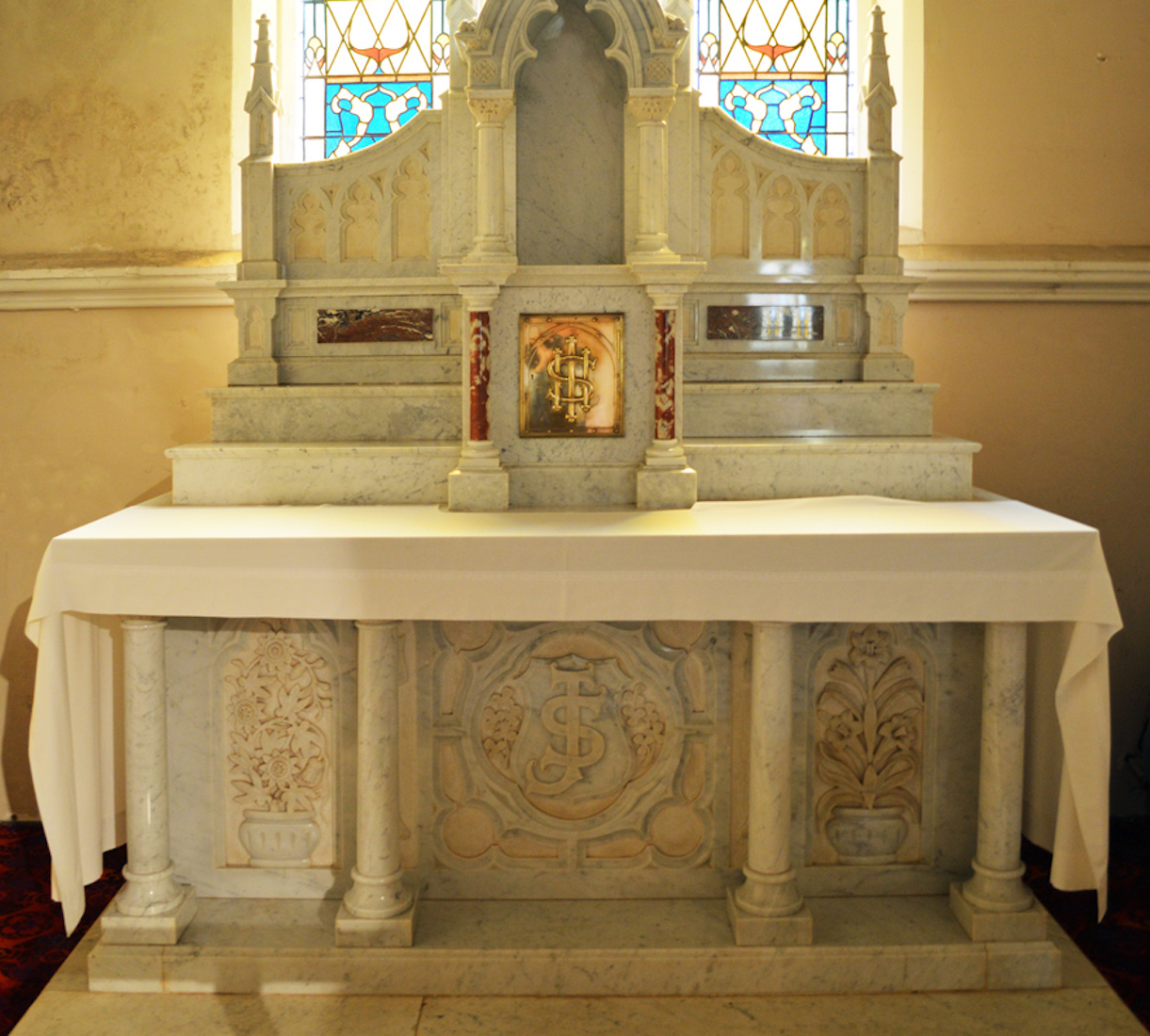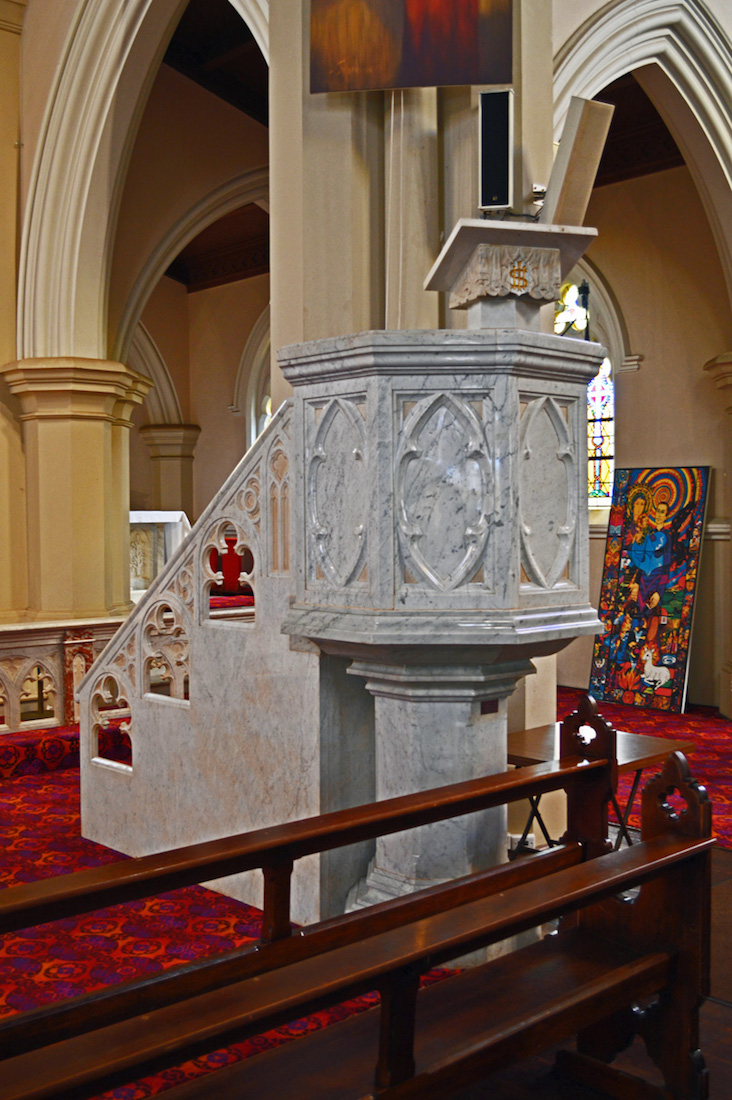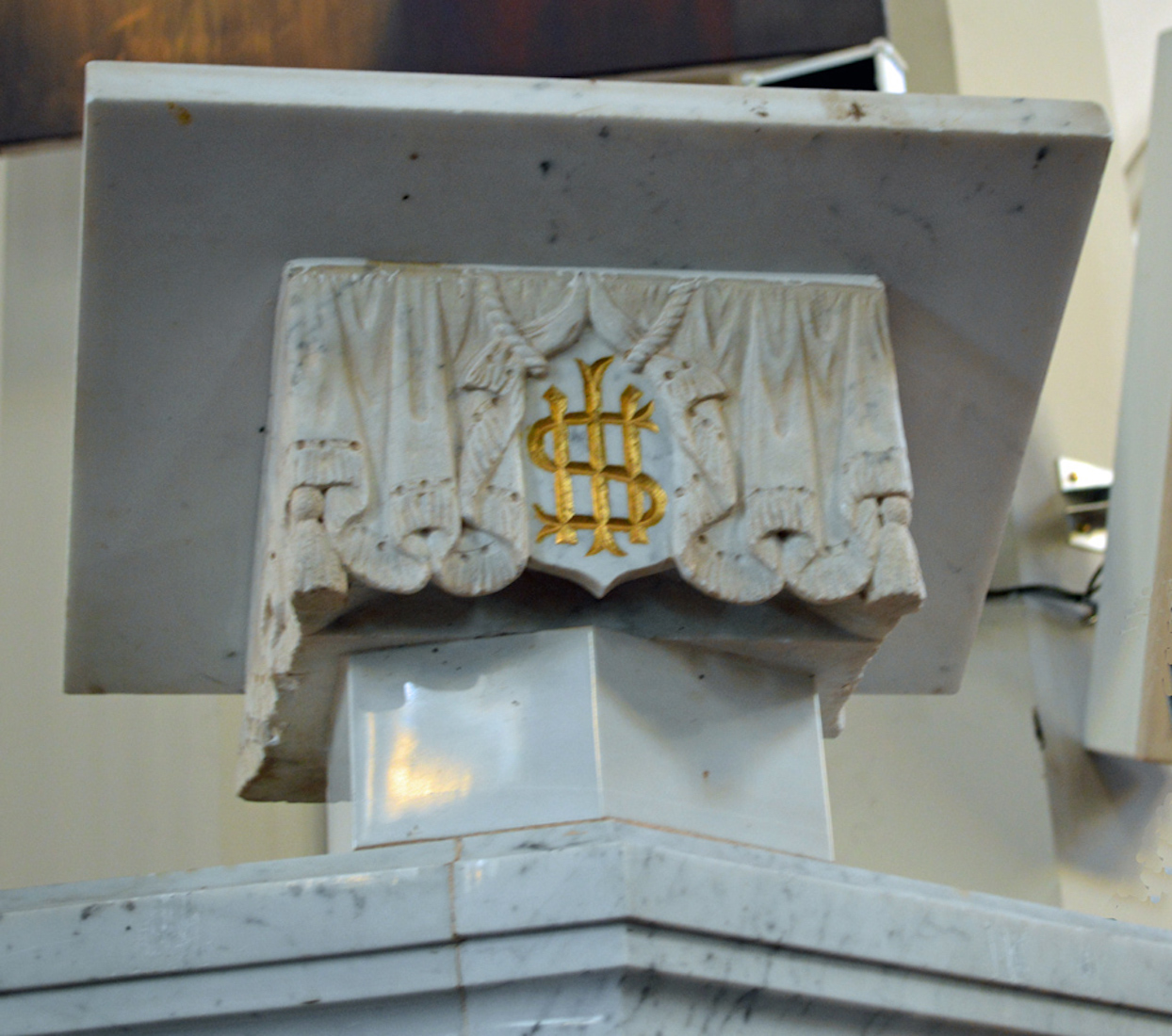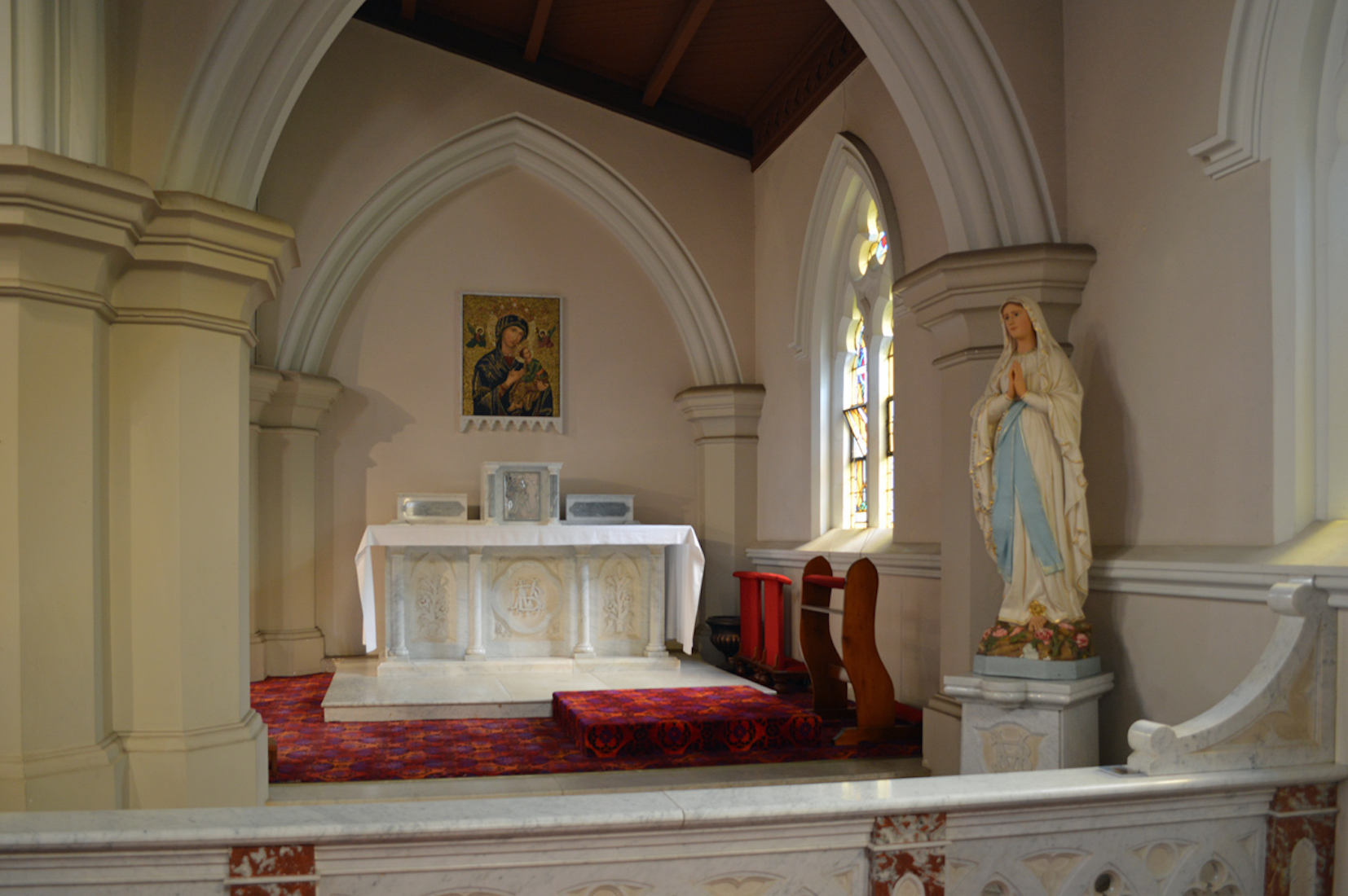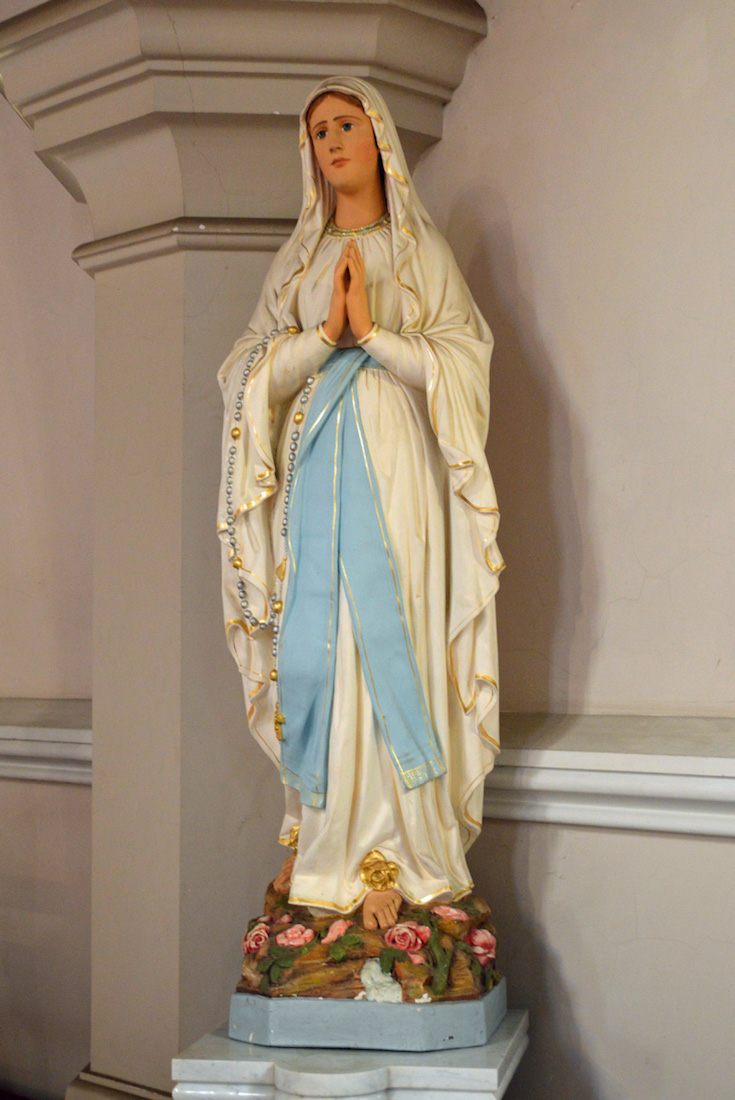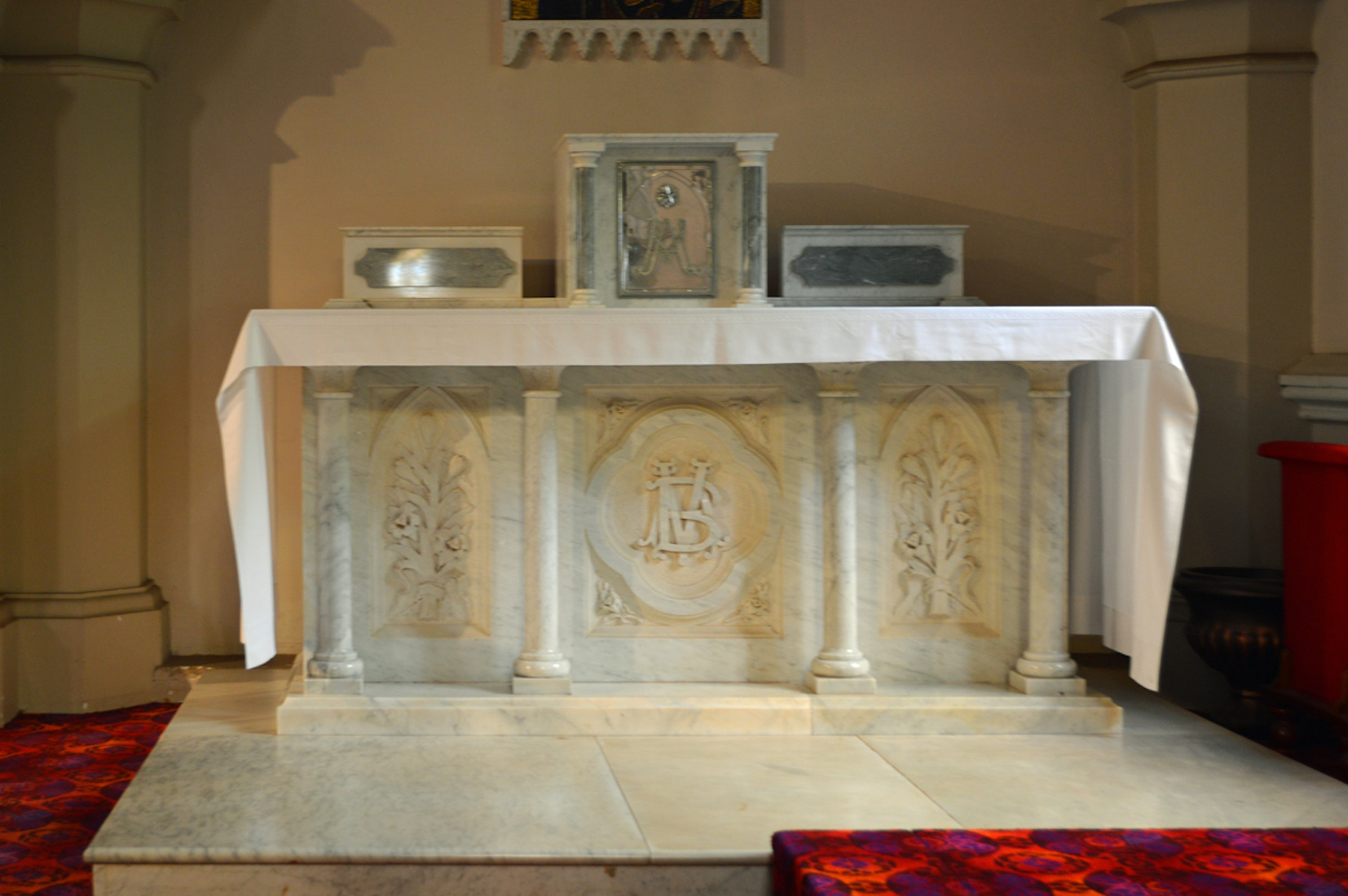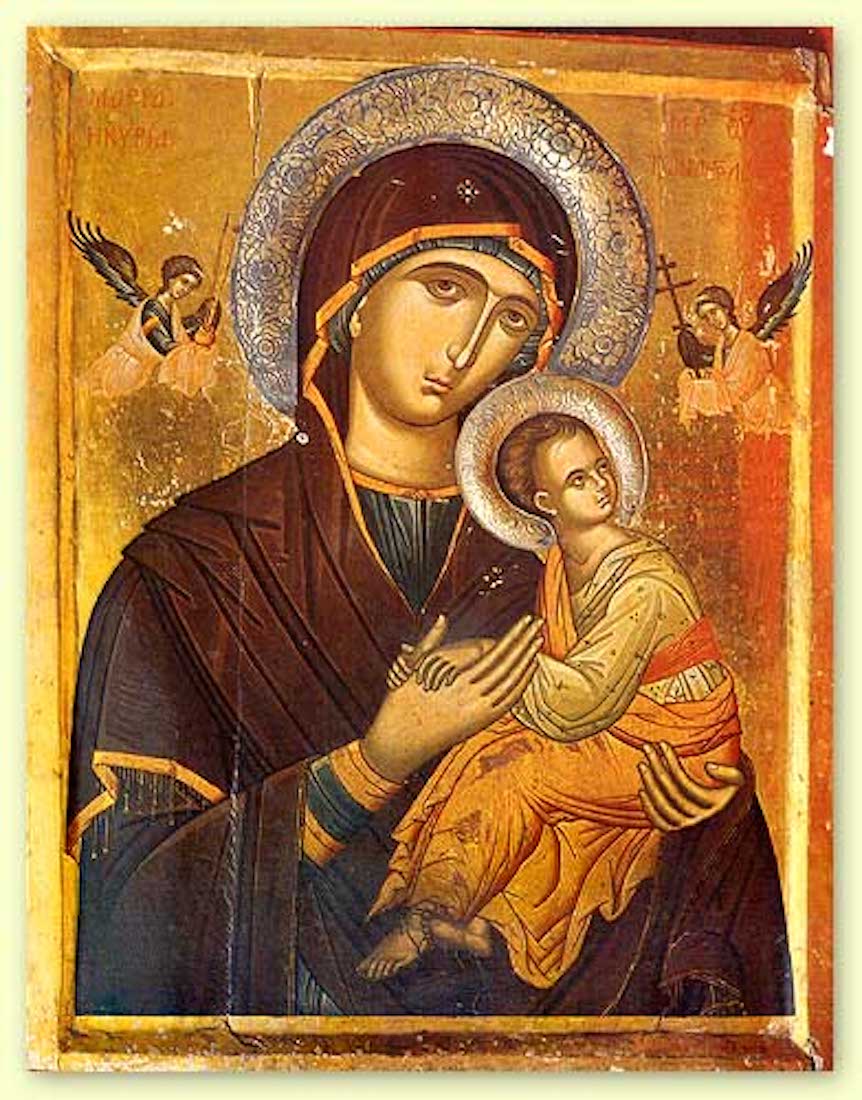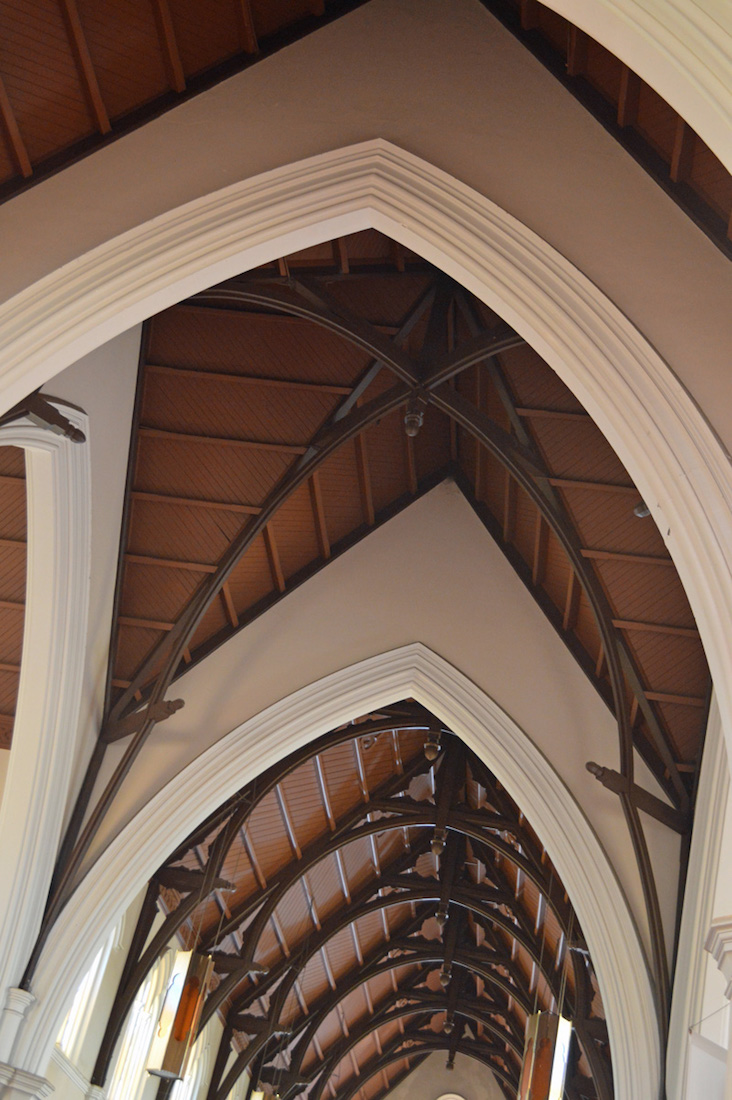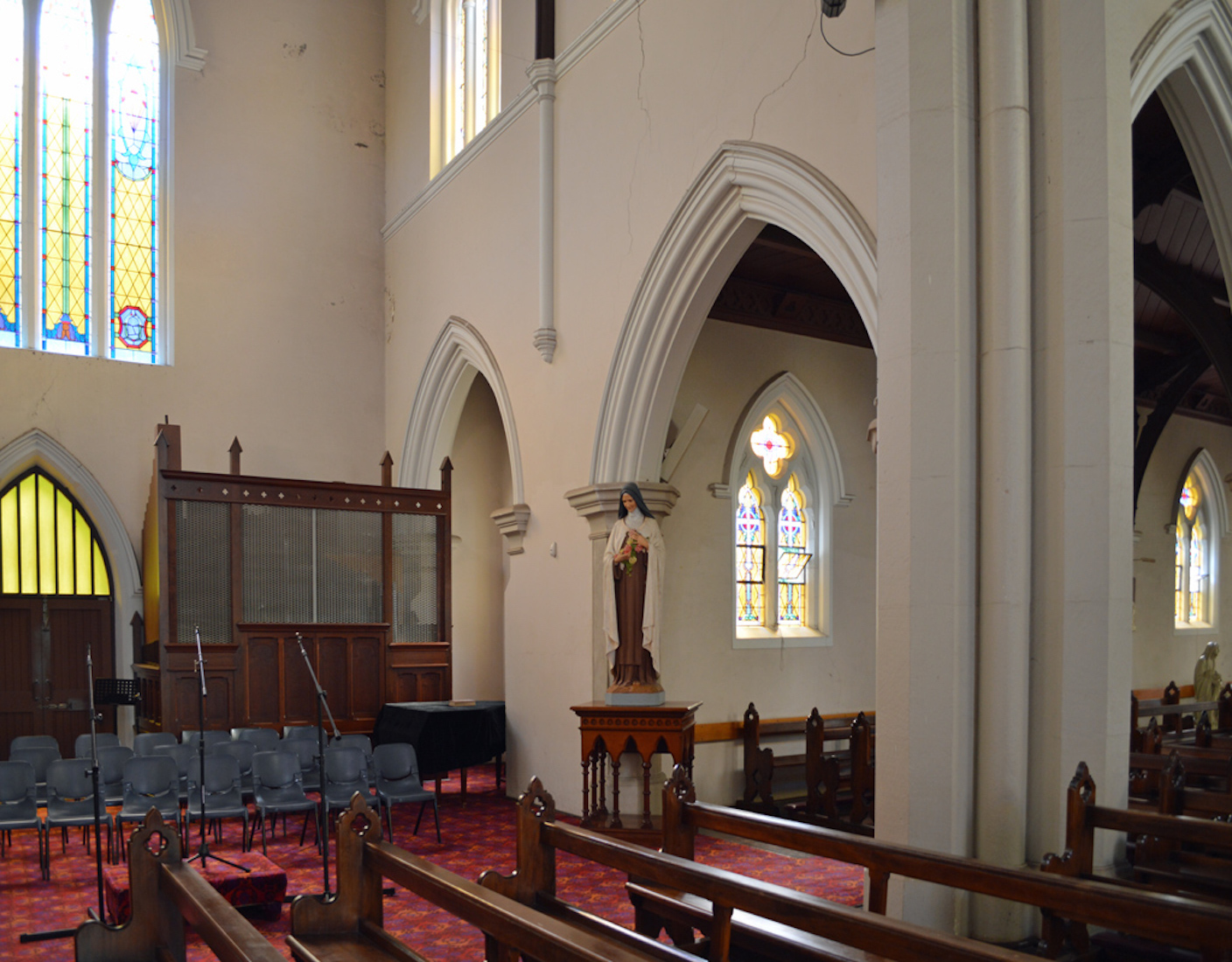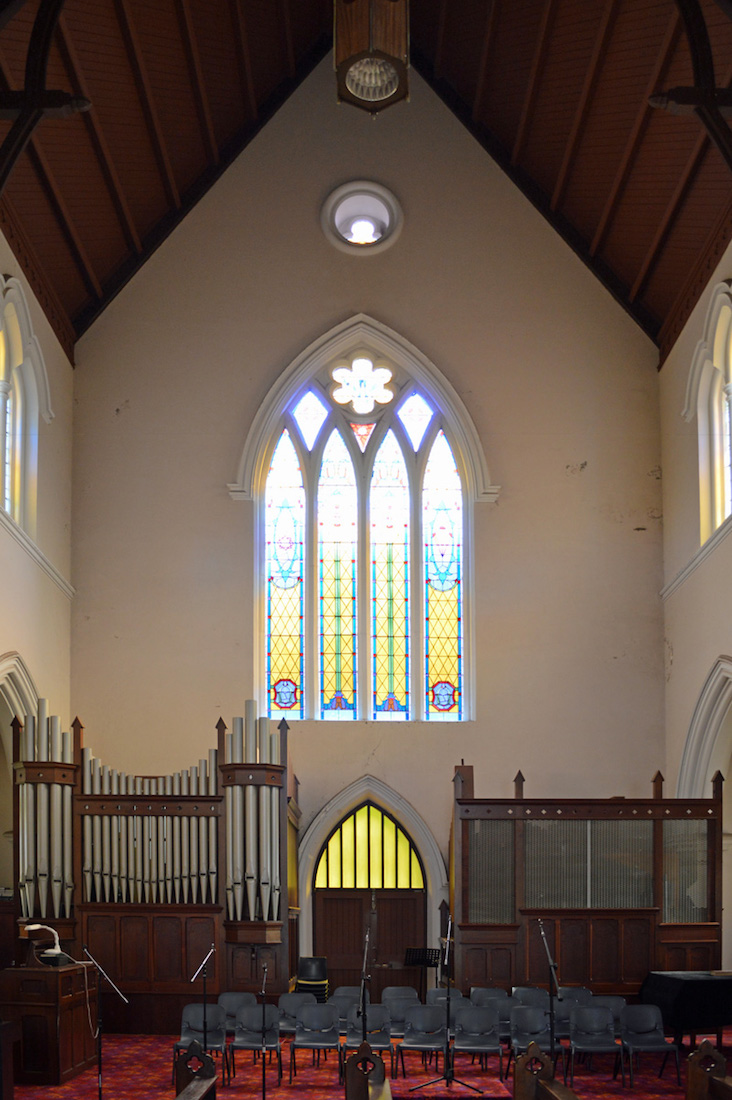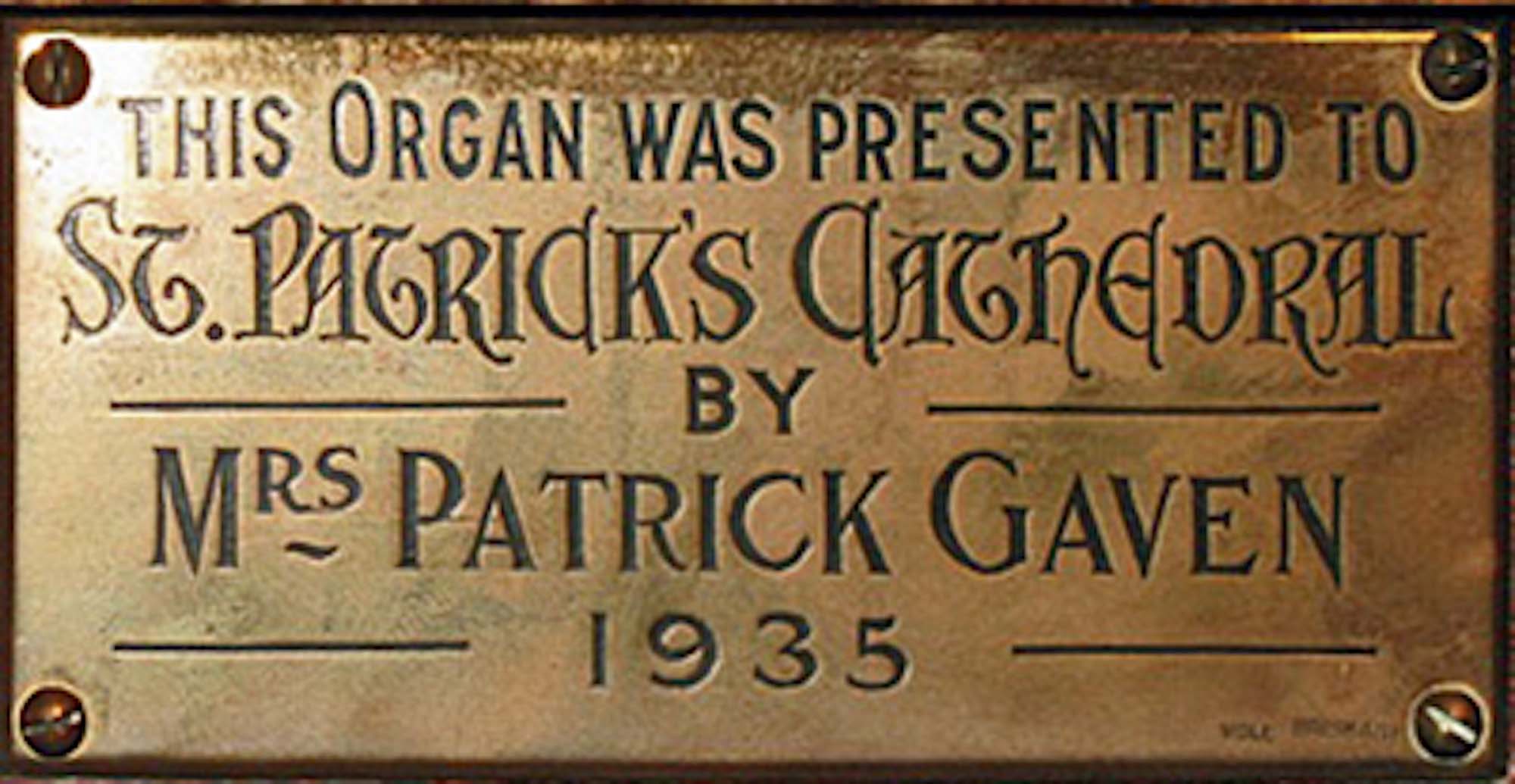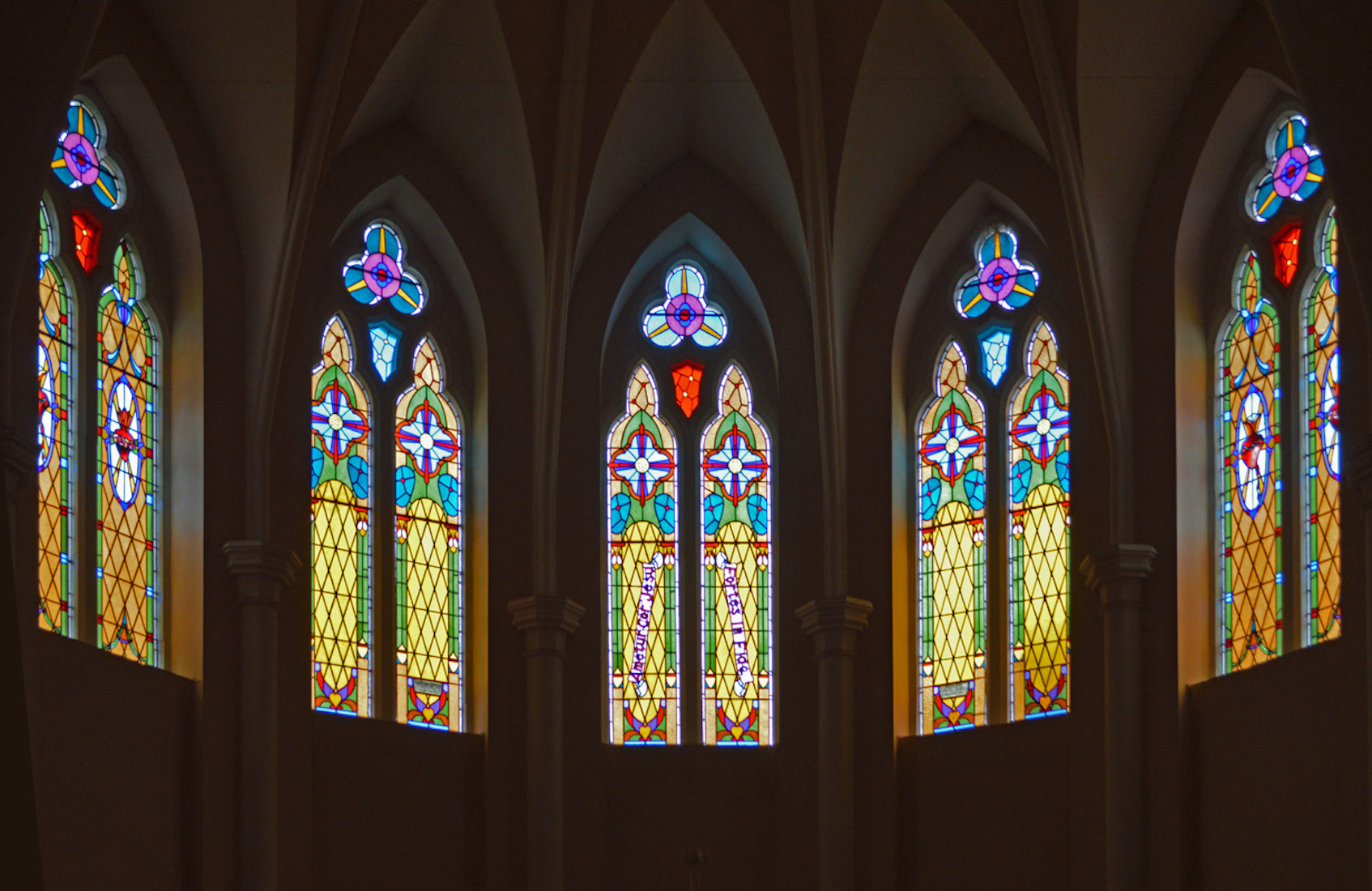
The apse windows are a bright and colourful backdrop to the sanctuary. The first and fifth windows appear to be identical, as do the second and fourth. Any special design features on these windows are only for the initiated! PLAN
42. CATHEDRA
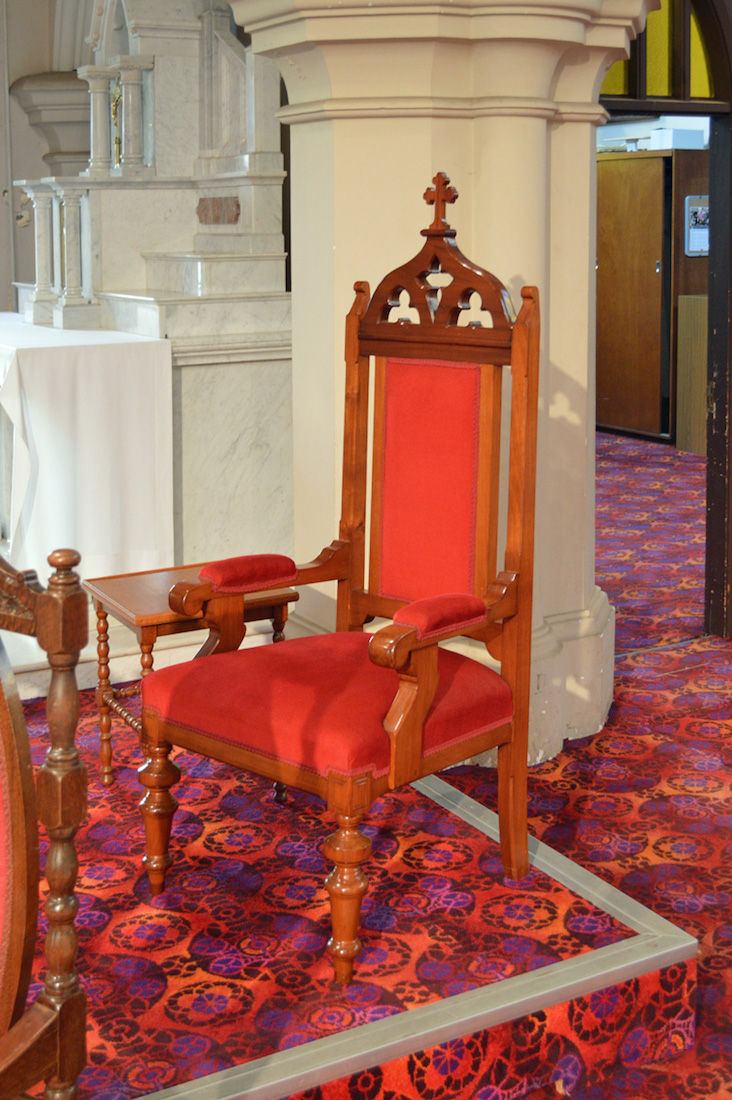
On the left of the sanctuary stands the cathedra or bishop’s throne. It is a symbol of the bishop's teaching authority, both in this Cathedral and in the surrounding Diocese. A church into which a bishop's official cathedra is installed is called a cathedral.
43. SACRED OILS
Also in the wall on this side of the Sanctuary is a compartment containing the three holy oils: chrism, oil of catechumens, and oil of the sick. These are often denoted by the Latin abbreviation for each holy oil: S.C. (sacrum chrisma), O.C. (oleum catechumenorum), and O.I. (oleum infirmorum).They have been in use since the Middle Ages. One set of these oils is kept on reserve in a cathedral.
44. NAVE ALTAR
The front altar carries the initials IHS – the first three letters of ‘Jesus’ in Greek. In the wake of Vatican II, a majority of Roman Catholic churches installed a freestanding main altar (for the Eucharistic celebration), usually somewhere forward of the traditional high altar. This is the situation here. The purpose is to allow the celebrant of the Mass to face the congregation.
45. HIGH ALTAR
The high altar stands against the Eastern wall of the sanctuary. It is simple in design with a bronze Crucifix and tabernacle at centre, and bearing the large red letters Alpha and Omega. Their meaning is found in the fact that alpha (Α) and omega (Ω) are respectively the first and last letters of the Classical (Ionic) Greek alphabet. This would be similar to referring to someone in English as the "A and Z". Thus, twice when the title appears it is further clarified with the additional title "the beginning and the end" (Revelation 21:6, 22:13). In context, it applies to Christ Himself.
46. TABERNACLE
Here we see the detail of the reredos behind the high altar. The golden tabernacle displays a Chalice at the centre of a Cross. The corner decorations may be fleur des lis, representing the Trinity. The tabernacle holds the reserved Elements of the Eucharist.
47. CRUCIFIX
The Crucifix bears a small sign at the top. It is likely that this carries (or would carry) the acronym INRI (Iēsus Nazarēnus, Rēx Iūdaeōrum) representing the Latin inscription which in English reads as ‘Jesus the Nazarene, King of the Jews’.
48. ST JOSEPH CHAPEL ALTAR
On the South side of the sanctuary, and occupying the South mini-transept, is the small St Joseph’s Chapel. The altar contains a small tabernacle with the letters IHS, but the niche above is bare. Below there is some ornate carving with an SJ symbol at centre (Saint Joseph), and a luxuriant potted plant on either side. This chapel was formerly used as a ‘chapel of mourning’.
49. PULPIT
We return to the crossing. Here at the corner stand the marble pulpit and steps.
50. PULPIT DETAIL
This was formerly used as the ambo, and bears the letters IHS. Historically, the ambo was one of the two raised stands in early Christian churches from which parts of the service were chanted or read.
51. PULPIT VIEW
Standing back from the pulpit we get our bearings. The sanctuary is to our extreme left, and to the left of the pulpit we get a glimpse of the Our Lady’s Chapel which we will visit next. To the right is a glimpse of the organ in the South transept.
53. OUR LADY
The statue of Our Lady is at the right as we enter the chapel. As the mother of Jesus, Mary has a central role in the Roman Catholic Church. The church’s veneration of her as the Blessed Virgin Mary has grown over time both in importance and manifestation, not only in prayer but also in art, poetry and music. The Catholic veneration of Mary is based on two aspects: the workings of God who made a virgin the Mother of God, and the Biblical view of Mary as the selected maiden of the Lord who is greeted and praised by both Elisabeth and the angel Gabriel (Luke 1:28, 42).
54. CHAPEL ALTAR
Like other altars in this Cathedral, this altar has a simple styling. There are three front panels. The central panel displays the letters BVM, standing for Blessed Virgin Mary. The outer panels show botanical images. On top of the Altar and at the rear are three small marble panels, the central one containing a plain silver Tabernacle bearing the script letter M.
55. ICON
I am unsure of the exact origin of this Icon of the Virgin Mary with Child, but it bears a striking resemblance to the classical Icon of the Blessed Virgin Mary holding the child Immanuel’.
56. LADY OF PERPETUAL SORROWS
This original icon dates from the 16th Century, and is in St. Catherine's Monastery, Mount Sinai (or some other place, depending on your source!). Based on this icon comes the title ‘Our Lady of Perpetual Help’ or ‘Our Lady of Perpetual Succour’ for the Blessed Virgin Mary.
57. CROSSING ROOF
We leave the sanctuary and chapels, and now stand in the crossing – where the transepts meet the Nave. Above us, the roof takes an interesting form. In some cathedrals the horizontal braces to the arches would take the form of angels, but not here.
58. CROSSING VIEW
To the South of the crossing we view the South transept, with part of the organ installation visible here. To the right we look out across the South nave aisle. At the corner, St Thérèse of Lisieux looks out.
60. ORGAN PLAQUE
A plaque on the organ records that it was presented to the Cathedral by Mrs Patrick Gaven in 1935. The total cost was £1,683. The organ has a detached console and divided oak case of simple design, with façade pipes only in the left-hand case. It was originally located in the rear gallery (choir loft) on either side of the window, with the console placed in the centre. It was restored and removed to the transept by Walter Emerson of Toowoomba in 1973-74, when the rear gallery was removed.


